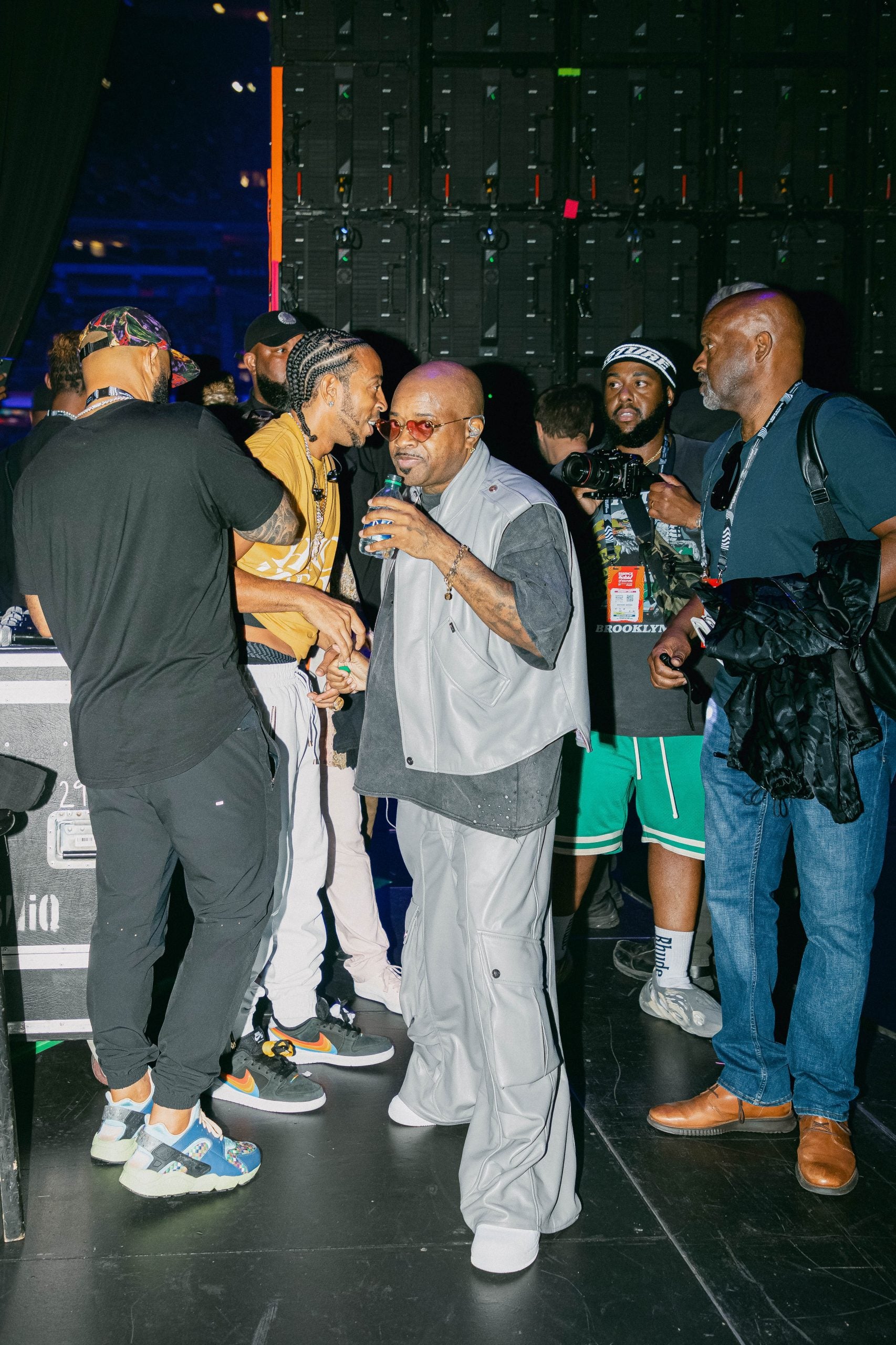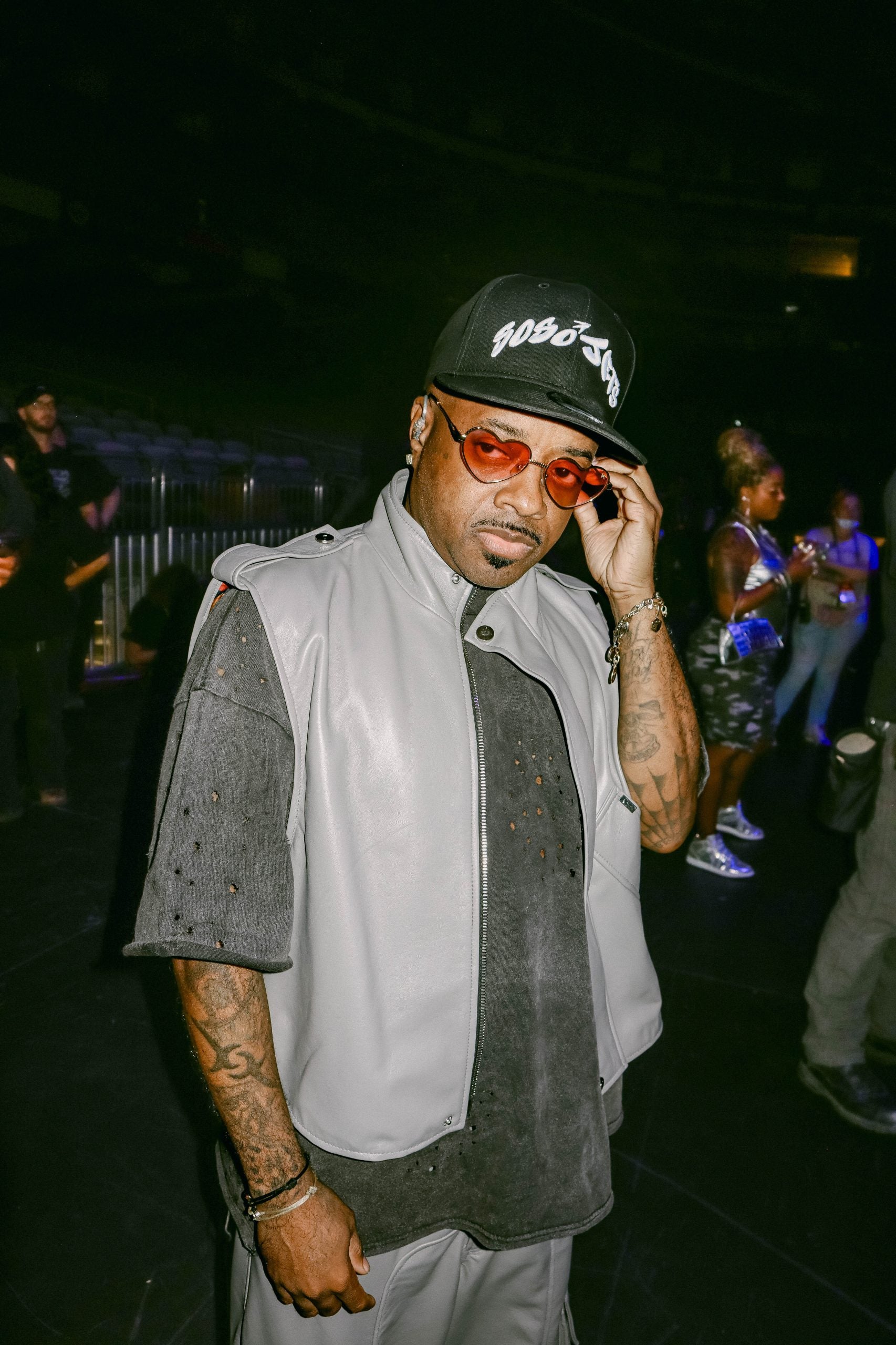
In the last 50 years, hip hop has revolutionized communities and mindsets, inspiring us all to fearlessly pursue our passions. Born on the streets of the Bronx, New York, the journey of Hip Hop has been nothing short of captivating. In the grand scope of things, the genre is still young and has much more to offer. In the 80s and 90s, hip hop became intricately intertwined with fashion, creating a powerful bond that would be recognized and celebrated for decades. In honor of the 50th anniversary of hip hop, rapper and music mogul, Jermaine Dupri, and the Godfather of Urbanwear, Karl Kani, spoke with ESSENCE about their thoughts on the future of hip hop and fashion, their love for the genre, and offer advice to aspiring artists who aim to follow in their footsteps.
Last week during the ESSENCE Festival of Culture in New Orleans, Dupri led a celebration of the 50 years of hip hop at the Superdome, which brought out icons like Big Boi, T.I., Ludacris, Gucci Mane, and Lil Jon. In honor of this major moment, Dupri tapped Kani to dress him in a head-to-toe Karl Kani ensemble. Sporting a classic all-gray look that exuded “I love hip hop,” Dupri embodied the spirit of the culture.

For Kani and Dupri, fashion and hip hop are united by the element of rebellion. “Kris Kross is remembered just as much for ‘Jump’ as the backward jeans,” Kani reflects. The iconic duo acknowledges that hip hop is the most listened-to genre globally, with even European fashion houses now imitating the baggy 90s aesthetic. Black people have always been the blueprint of cool, and Kani and Dupri have successfully capitalized on this. As music and fashion have evolved, their unwavering love remains at the core of their artistry.
According to Dupri, amidst the 50th-anniversary celebrations, many seem to be going through the motions without truly honoring hip hop: “What are you doing to show what hip hop did to you? Hip hop made me tell two kids from Atlanta to put their clothes on backward,” he declares. “You don’t wake up in the morning and say, let me put my clothes on backwards, but the fact that we were doing rap, it felt like it was a comfort zone and that we could get away with anything.” Dupri encourages aspiring artists to reconnect with their creativity, rather than seeking validation solely through social media metrics. TLC’s Left-Eye wore a condom over her eye for most of her on-stage performances, and to Dupri, that was an act that pushed boundaries and showcased the true essence of hip hop – an audacity he believes is missing in today’s landscape.

In today’s version of Hip Hop, Kani and Dupri are seeing few artists being emulated to the extent they were in the 90s. You had kids who would wear the exact baggy FUBU or Karl Kani jeans, maybe backward, as their favorite artist. Even Dupri’s distinctive nose ring and shaved eyebrows were mimicked by fans at one point. Now, the duo sees that young artists seem less inclined to forge their own paths, hindering the creative process of making music. “Image should always be in the hands of the artist,” says Dupri. “The artists are at the forefront of style, and the artist is the one that has the influence. It’s incredible that an artist could say a certain style is hot, and suddenly, it is. I remember when the skinny jean phase started coming in the 2000s. Lil Wayne was the one who legitimized that.”
This year, Karl Kani was honored with the Lifetime Achievement Award at MAGIC, nearly three decades after founding his brand. His impact on fashion remains palpable to this day. Offering advice to aspiring artists and designers, Kani advocates for a minimalist approach. “If I was an artist coming out, I’d focus more on being minimalist, being creative in terms of my style and color palettes, and being consistent,” says Kani. “Even when we sell stuff to stores, they will say the fashion is good, but we can’t build a business off of fashion items only; it needs to sustain basics. So, I would definitely implement that into any style I’m doing for any new artists right now.”

An observation shared by many is that smaller designers no longer receive the opportunities they once had in the 90s. Dupri attributes this shift to younger artists being more focused on securing a seat at fashion week rather than genuinely connecting with people and their communities. He believes that by supporting small designers and fostering authentic connections, hip hop can regain its rightful place.
“I got Kris Kross the African American League hoodies at a Howard [University] homecoming,” says Dupri. “It wasn’t a fashion show. It wasn’t Paris. It wasn’t on a yacht. It was a homecoming. When Chris Latimer gave these to Kris Kross, they looked like some cool ass hoodies. It was based on taste, how you wore things and the scheme of what you were trying to do; it worked for us. Fast forward, they got pictures [in the hoodies], and next thing you know, they became one of the biggest Black brands at that time, and everybody was trying to get their hands on these sweatshirts and hoodies.”
In unity, Dupri and Kani echo the sentiment that change is always possible. All it takes is a couple of top artists to champion Black designers once again, and the entire landscape could shift, revitalizing the wave of fashion and music.




